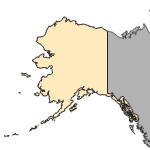Pseudemys concinna floridana
(Florida cooter)
Reptiles-Turtles
Native Transplant |
|
Common name: Florida cooter
Taxonomy: available through
www.itis.gov
Native Range: Southeastern coastal plains from southeastern Virginia to portions of the Florida Everglades and west to Alabama (Ernst et al., 1994; Conant and Collins, 1998).



|

Alaska |

Hawaii |

Puerto Rico &
Virgin Islands |

Guam Saipan |
Hydrologic Unit Codes (HUCs) Explained
Interactive maps: Point Distribution Maps
Nonindigenous Occurrences:
Table 1. States with nonindigenous occurrences, the earliest and latest observations in each state, and the tally and names of HUCs with observations†. Names and dates are hyperlinked to their relevant specimen records. The list of references for all nonindigenous occurrences of Pseudemys concinna floridana are found here.
Table last updated 11/23/2024
† Populations may not be currently present.
Ecology: Habitat: Large slow-flowing rivers and associated backwaters and ponds (Ernst et al., 1994). Life History: Reaches maturity at three to four years and plastron length of 12–14 cm (males) or five to seven years and 24-25 cm in length (females) (Ernst et al., 1994). Two to six clutches ranging from 10 to 29 eggs are laid. Nesting occurs any time of year in Florida, but usually not in summer. Elsewhere, nesting is in spring and approaching summer in the northern extent of its range (Ernst et al., 1994).
Means of Introduction: Probably pet release.
Status: Failed in Massachusetts (Cardoza et al., 1993) and Maryland.
Impact of Introduction: The impacts of this species are currently unknown, as no studies have been done to determine how it has affected ecosystems in the invaded range. The absence of data does not equate to lack of effects. It does, however, mean that research is required to evaluate effects before conclusions can be made.
References: (click for full references)
Cardoza, J.E., G.S. Jones, T.W. French, and D.B. Halliwell. 1993. Exotic and translocated vertebrates of Massachusetts. Fauna of Massachusetts Series No. 6. 2nd edition. Massachusetts Division of Fisheries and Wildlife, Westborough, MA.
Conant, R. and J. T. Collins. 1998. A field guide to reptiles and amphibians. Eastern and Central North America. Third Edition, Expanded. Houghton and Mifflin Co. Boston.
Crother, B.I. (chair). Committee on Standard and English and Scientific Names. 2008. Scientific and standard English names of amphibians and reptiles of North America north of Mexico, with comments regarding confidence in our understanding. Society for the Study of Amphibians and Reptiles Herpetological Circular. No. 37. iii + 86p.
Ernst, C. H., J. E. Lovich, and R. W. Barbour. 1994. Turtles of the United States and Canada. Smithsonian Institution Press, Washington and London.
Harris, H. S., Jr. 1975. Distributional survey (Amphibia/Reptila): Maryland and District of Columbia. Bulletin of the Maryland Herpetological Society. 11(3): 73-167.
Author:
McKercher, E.
Revision Date: 6/29/2023
Citation Information:
McKercher, E., 2024, Pseudemys concinna floridana (Le Conte, 1830): U.S. Geological Survey, Nonindigenous Aquatic Species Database, Gainesville, FL, https://nas.er.usgs.gov/queries/FactSheet.aspx?SpeciesID=1253, Revision Date: 6/29/2023, Access Date: 11/23/2024
This information is preliminary or provisional and is subject to revision. It is being provided to meet the need for timely best science. The information has not received final approval by the U.S. Geological Survey (USGS) and is provided on the condition that neither the USGS nor the U.S. Government shall be held liable for any damages resulting from the authorized or unauthorized use of the information.